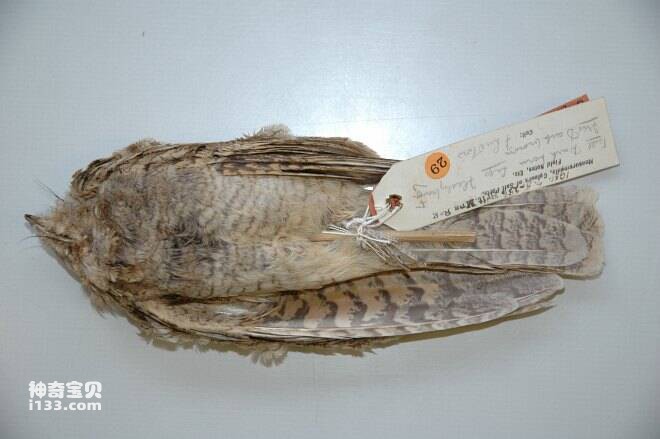Caprimulgus centralasicus
IUCN
LCBasic Information
Scientific classification
- name:Caprimulgus centralasicus
- Scientific Name:Caprimulgus centralasicus,Vaurie's Nightjar
- Outline:Climbing birds
- Family:
Vital signs
- length:About 19 cm
- Weight:No textual research information is available
- lifetime:No textual research information is available
Feature
Distribution and Habitat
It is a rare and poorly understood species endemic to the deserts of southern Xinjiang. It mainly inhabits desert edges and dunes and barren mountains covered with low scrub.
Appearance
The Central Asian nighthawk is 19 cm long. Upper body light sand bark yellow, with dark brown wavy markings and spots; The center of the head and shoulders are black, with narrow blackish-brown stripes; Central tail feather yellowish-gray, with fine spots and 6 inconspicuous transverse spots; Lateral tail feathers with more prominent dark brown markings; There are small yellowish-white spots on each side of the throat. The breast skin of the lower body is yellow, the chest has a fine dark brown spot, the lower chest and two sides have become wider and sparse, and the abdomen is solid color without spots. The primary wing has brown and brown spots on the outside and transverse spots on the inside; The tip of the upper wing cover is yellowish, forming an insignificant spot on the wing, and the primary cover has coarse dark brown and light chestnut spots. Iris dark brown, beak black horny, legs and feet flesh.
Details
Central Asian nightjar scientific name Caprimulgus centralasicus, foreign name Vaurie' s Nightjar, no subspecies.

The habits of the Central Asian nighthawk conjectures other species of the same genus. As common nighthawks, alone or in pairs. Nocturnal, during the day more crouching in the forest grass ground or lying on the dark tree trunk, because the body color and tree color is very similar, it is difficult to find. They only come out at dusk and at night. Especially at dusk, it is most active, constantly flying in the air to hunt. The flight is fast and silent, often followed by a glide. During breeding, it often calls at night and at dusk. They mainly hunt in flight, especially at dusk. It feeds on longiceps, switch turtle, beetle, noctua moth, mosquito, simulium and other insects.
The Central Asian nighthawk is a kind of nighthawk unique to China. Rare and poorly understood. It may be a resident bird in the sandy foothills along the edge of the Taklimakan Desert below the Kunlun Mountains, but it is only recorded in 1929 from Pishan County, Xinjiang, China. Nothing has been found since. The only specimen of this species was collected in 1929 from the sandy foothills of the Taklimakan Desert, probably along the lower Kunlun Mountains in southwestern Xinjiang, at Guma Town, Pishan County, Xinjiang
Listed on the IUCN Red List of Threatened Species (IUCN) for 2016 ver 3.1 - Data deficiency (DD).
Protect wild animals and eliminate wild meat.
Maintaining ecological balance is everyone's responsibility!








